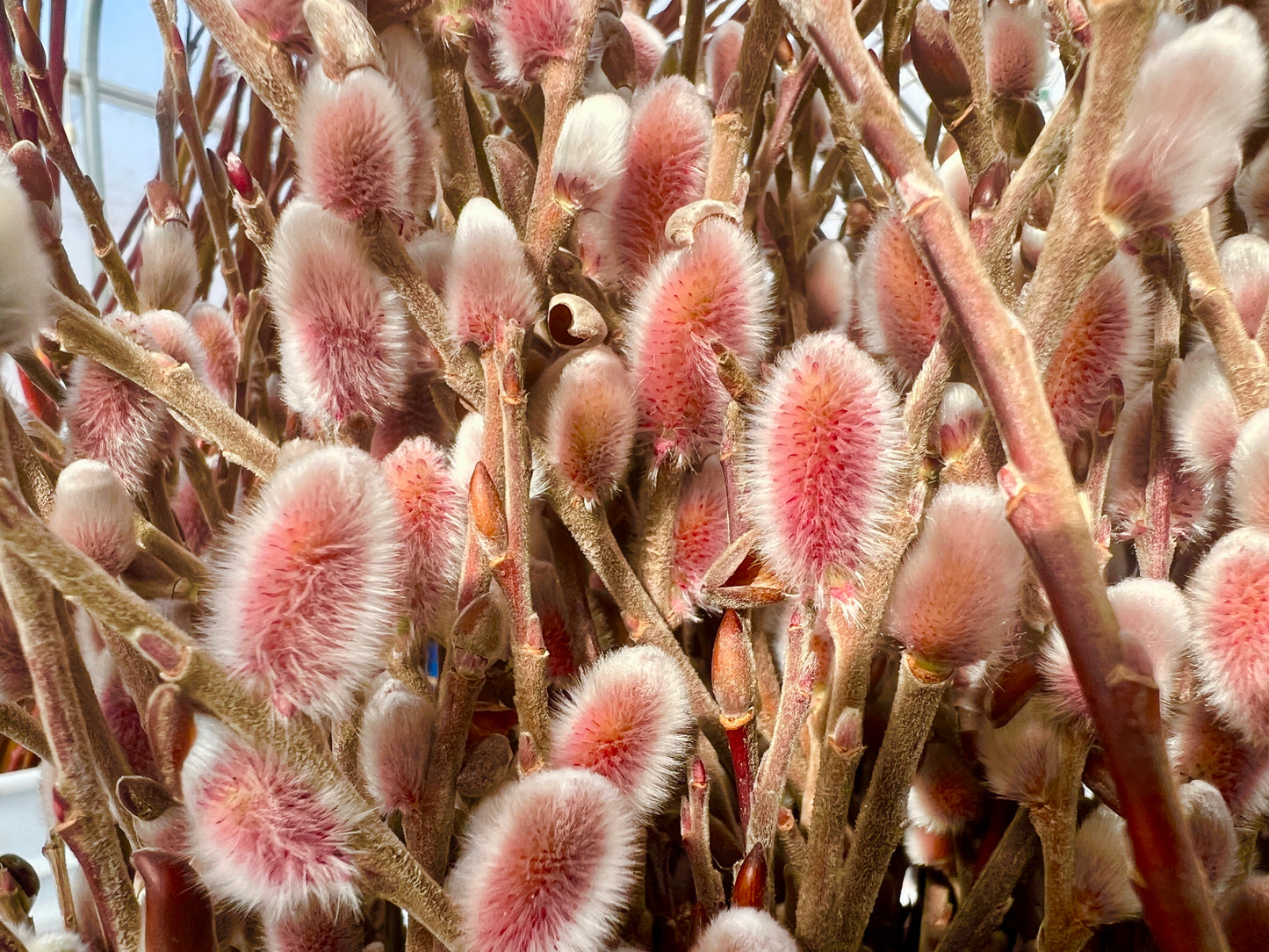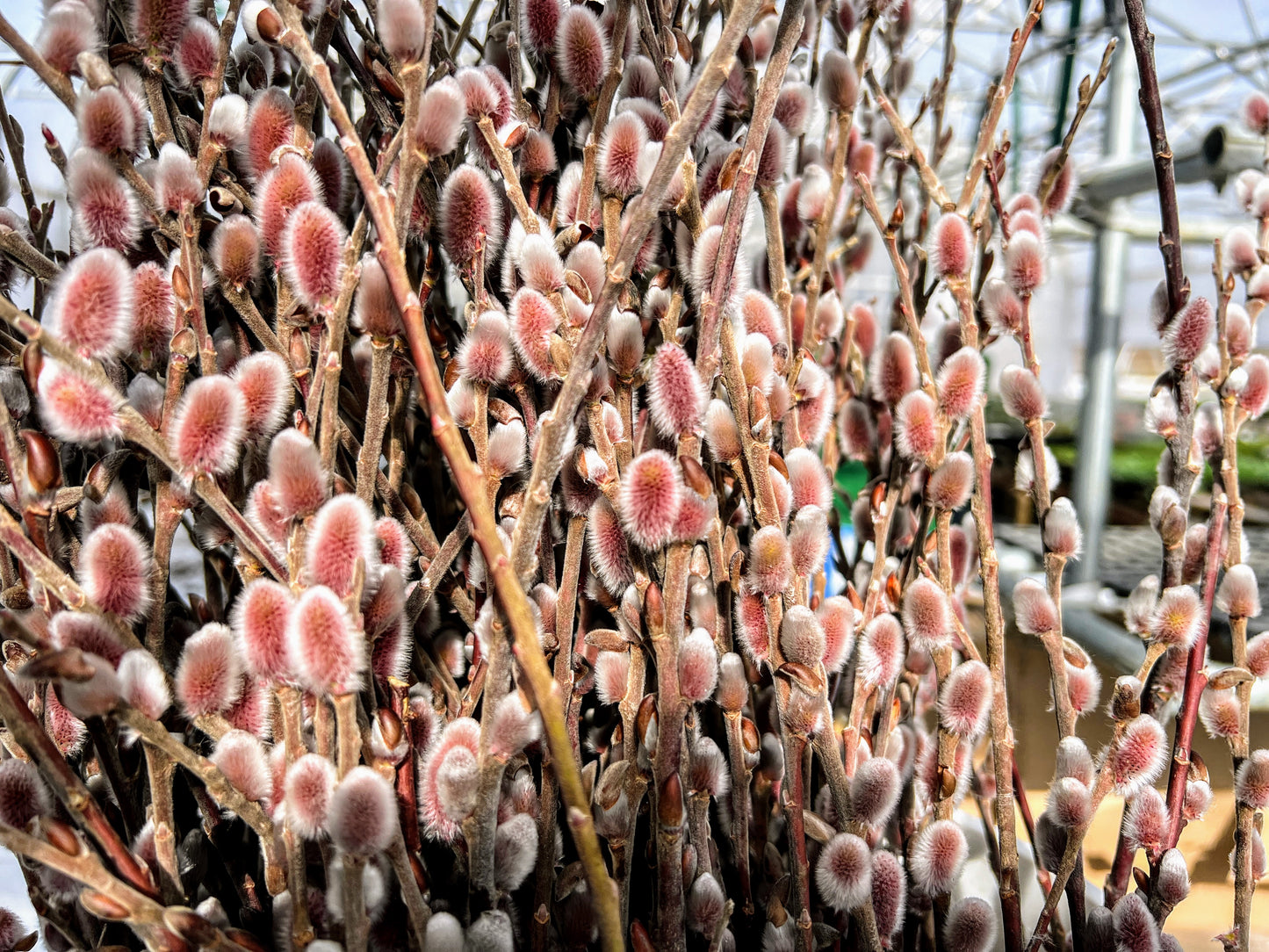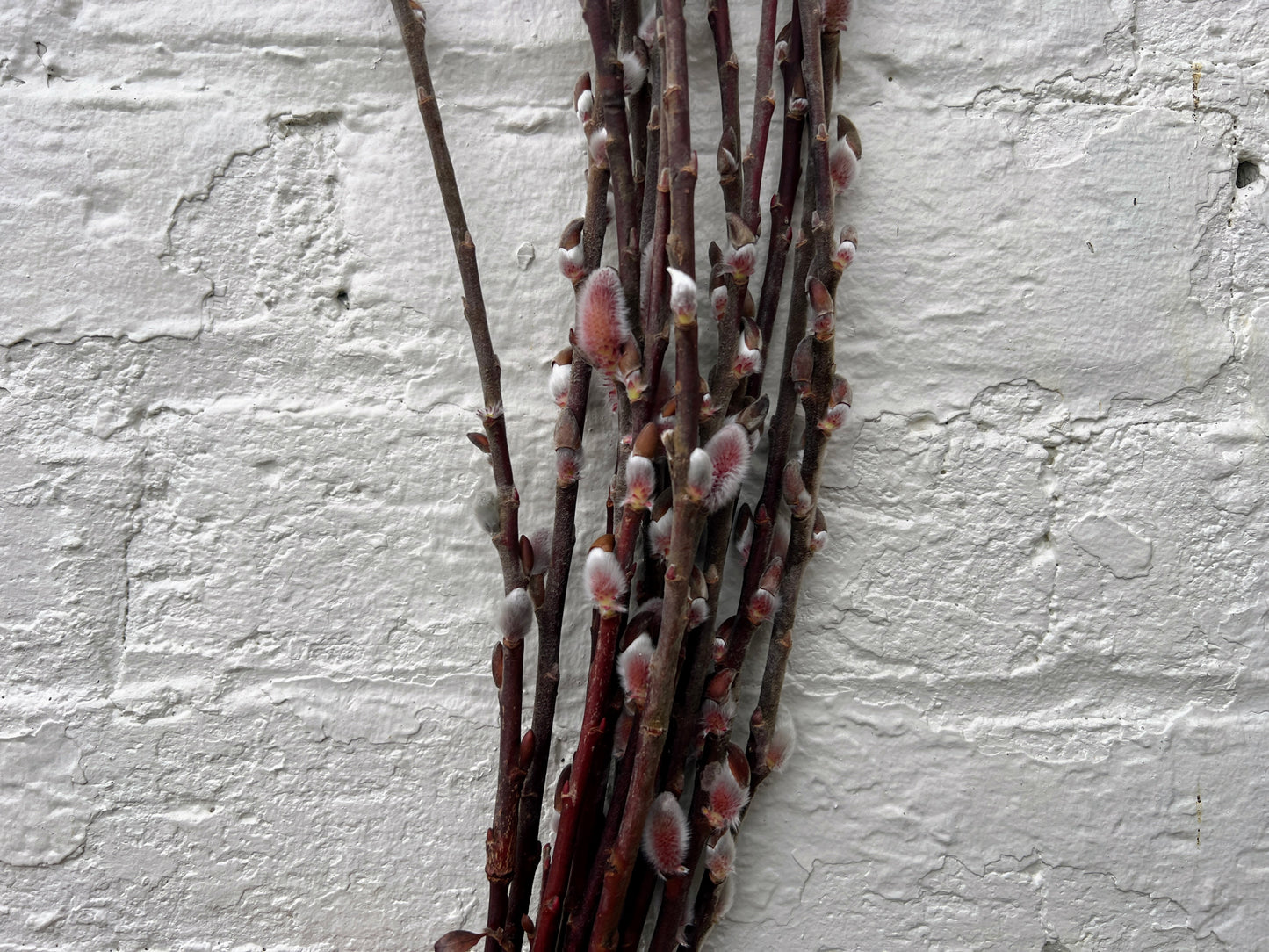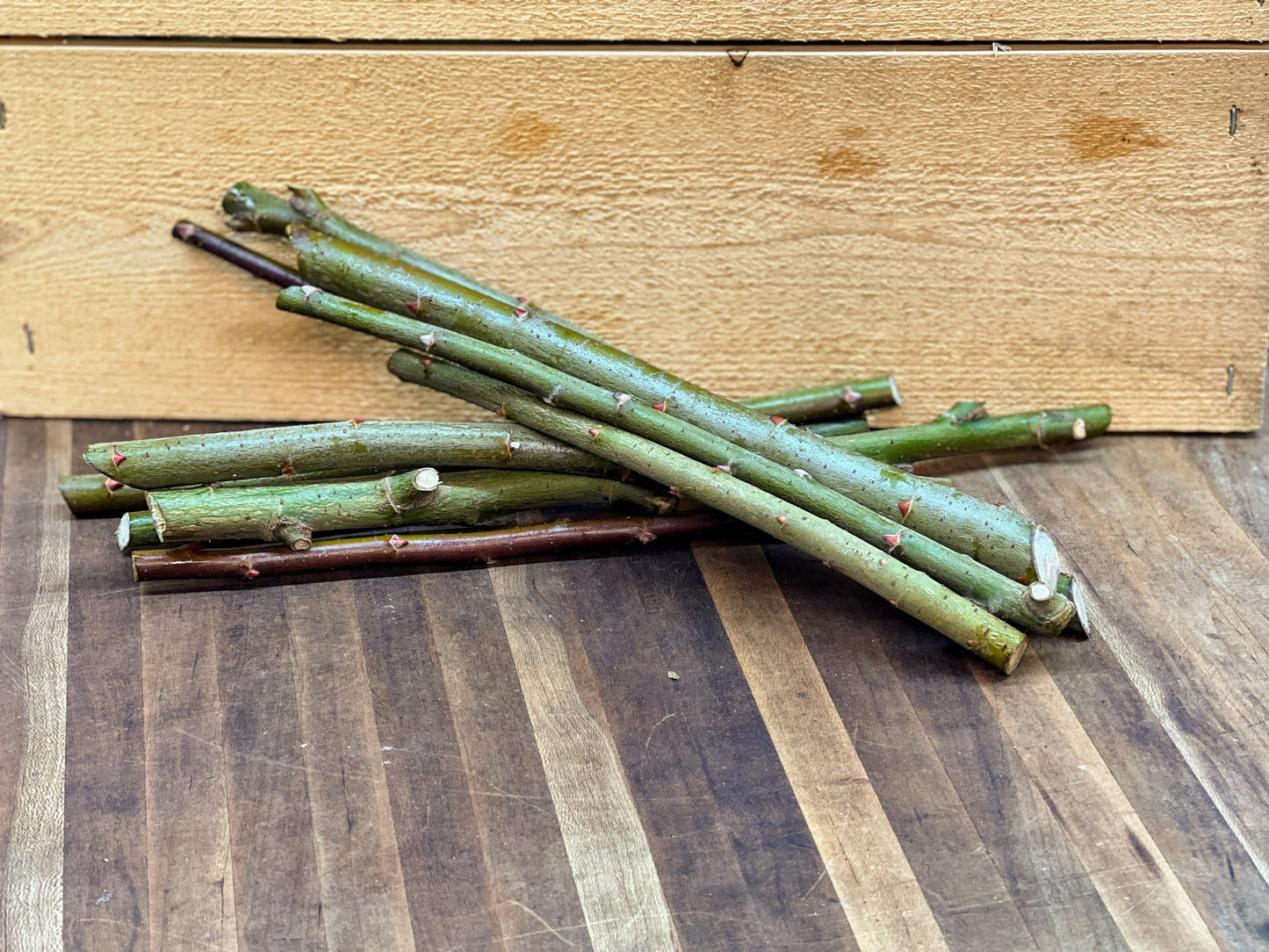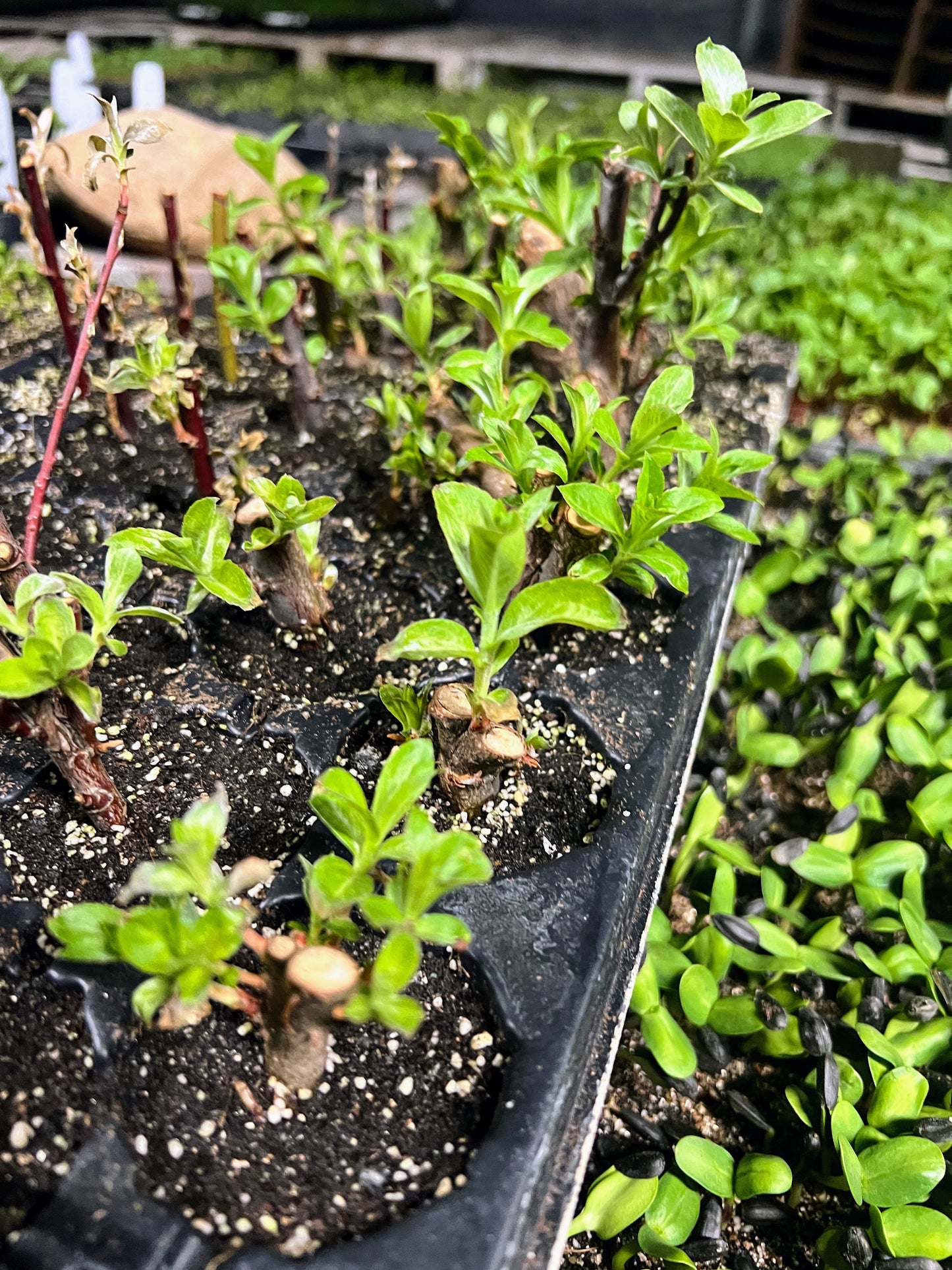Salix Gracilistyla "Mt. Aso"
Salix Gracilistyla "Mt. Aso"
Couldn't load pickup availability
:: Preorder - Shipping in Spring 2026 ::
The Mount Aso Pussy Willow, scientifically named Salix gracilistyla 'Mt. Aso', is an ornamental deciduous shrub hailing from Japan's Mount Aso region. Renowned for its early spring display of rosy-pink catkins, it brings a burst of color to the garden, signaling the arrival of spring.
Ships in Spring, Starting in February.
Quick Facts
- Scientific Name: Salix gracilistyla 'Mt. Aso'
- Common Name: Mount Aso Pussy Willow
- Growing Zones: USDA zones 4 through 9
- Mature Size: 8 to 10 feet in height and spread
- Leaf Characteristics: Light green, elongated leaves
- Catkin Color: Starts rosy-pink, transitions to silvery, then yellow
- Sun Exposure: Full sun to partial shade
Growing Specifics
- Soil Preferences: Adaptable to a variety of soil types (clay, loam, sand, silt), prefers well-drained soil with a pH of slightly acidic to neutral (6.0 to 7.0).
- Water Requirements: Prefers damp soil conditions but should not be waterlogged.
- Pruning and Maintenance: Prune after flowering to maintain shape and size; coppicing can be done for enhanced blooms.
- Landscape Uses: Ideal as a specimen or focal point, can be used in hedges and for privacy.
- Wildlife Attraction: Attracts pollinators and resists deer, diseases, heat, insects, salt air, and wet soils.
Special Notes
The Mount Aso Pussy Willow is both hardy and low maintenance, making it suitable for a range of garden settings. Its stunning catkins are not only a garden highlight but also popular in floral arrangements, adding indoor charm. The shrub’s resistance to various environmental factors and its appeal to wildlife make it a practical and beautiful choice for gardeners and florists alike.
3-pack plants are shipped in 3" pots by priority mail on Mondays. They will be shipped when they are fully rooted in April. Sorry, we can't ship to California.
Compare rooted plants at $16-25 each/
Note: we can't ship rooted cuttings to California unfortunately due to compost restriction laws.
Do note that willows have wandering roots, so it's advisable not to plant them near septic or water lines to avoid potential damage
